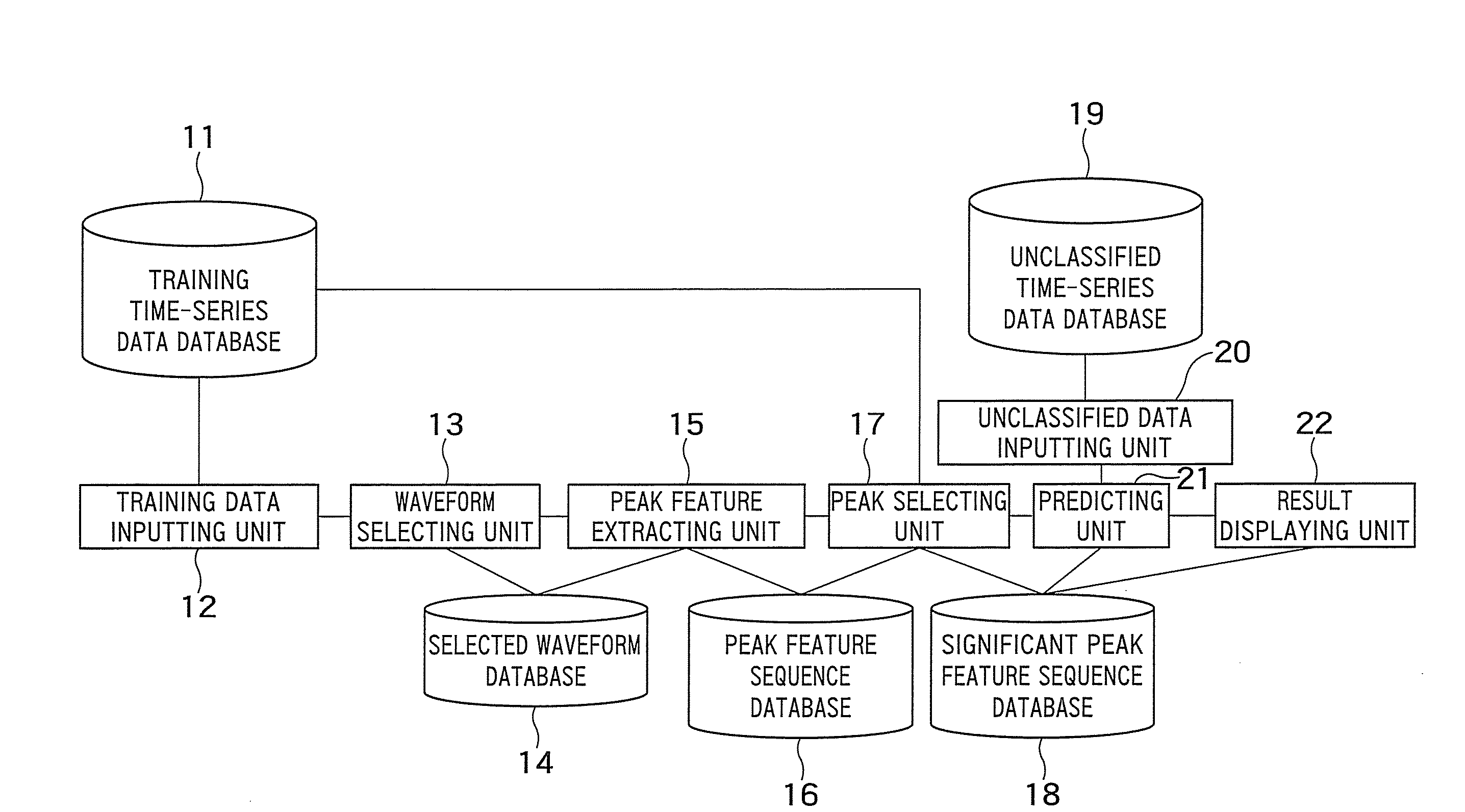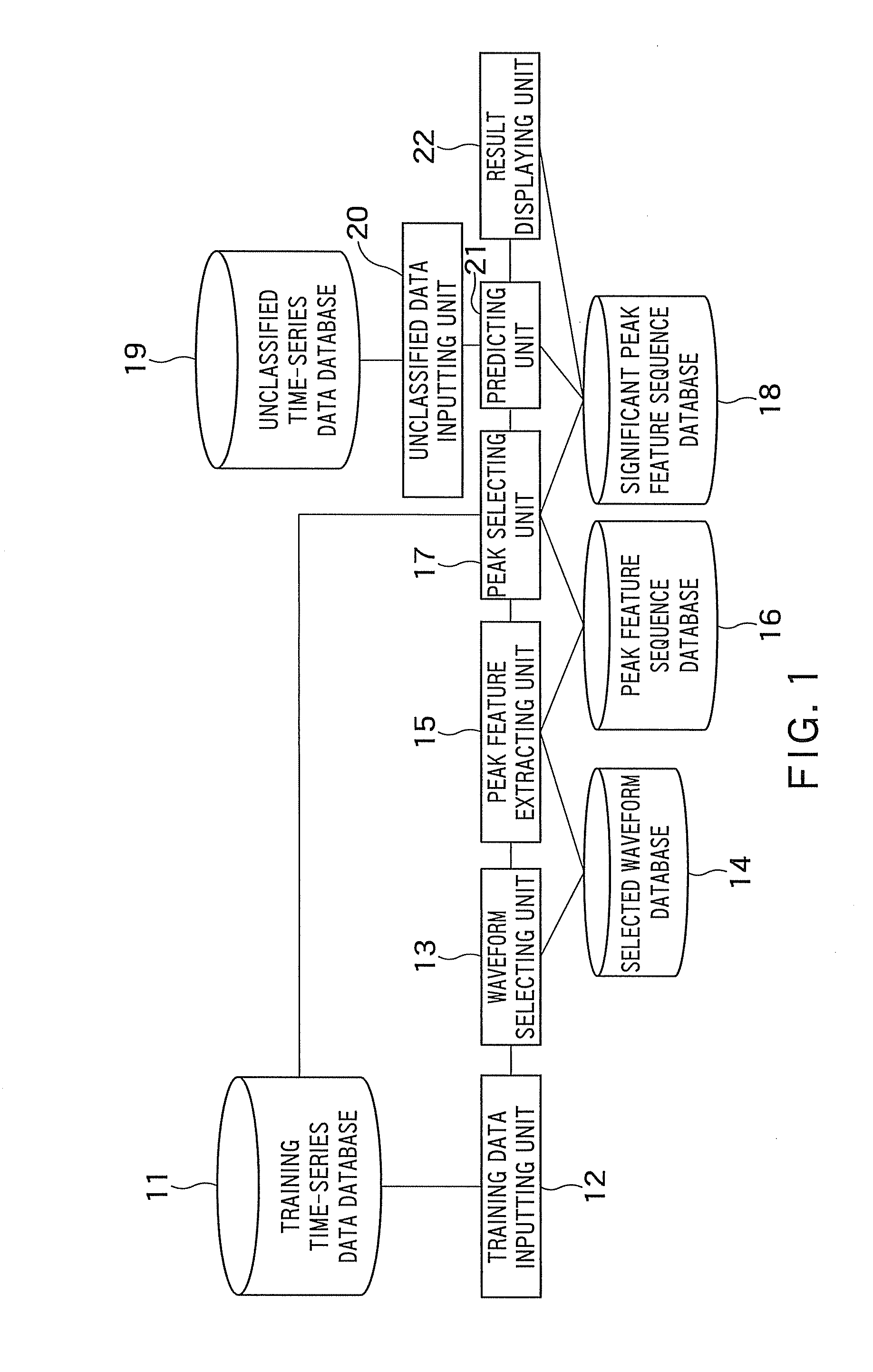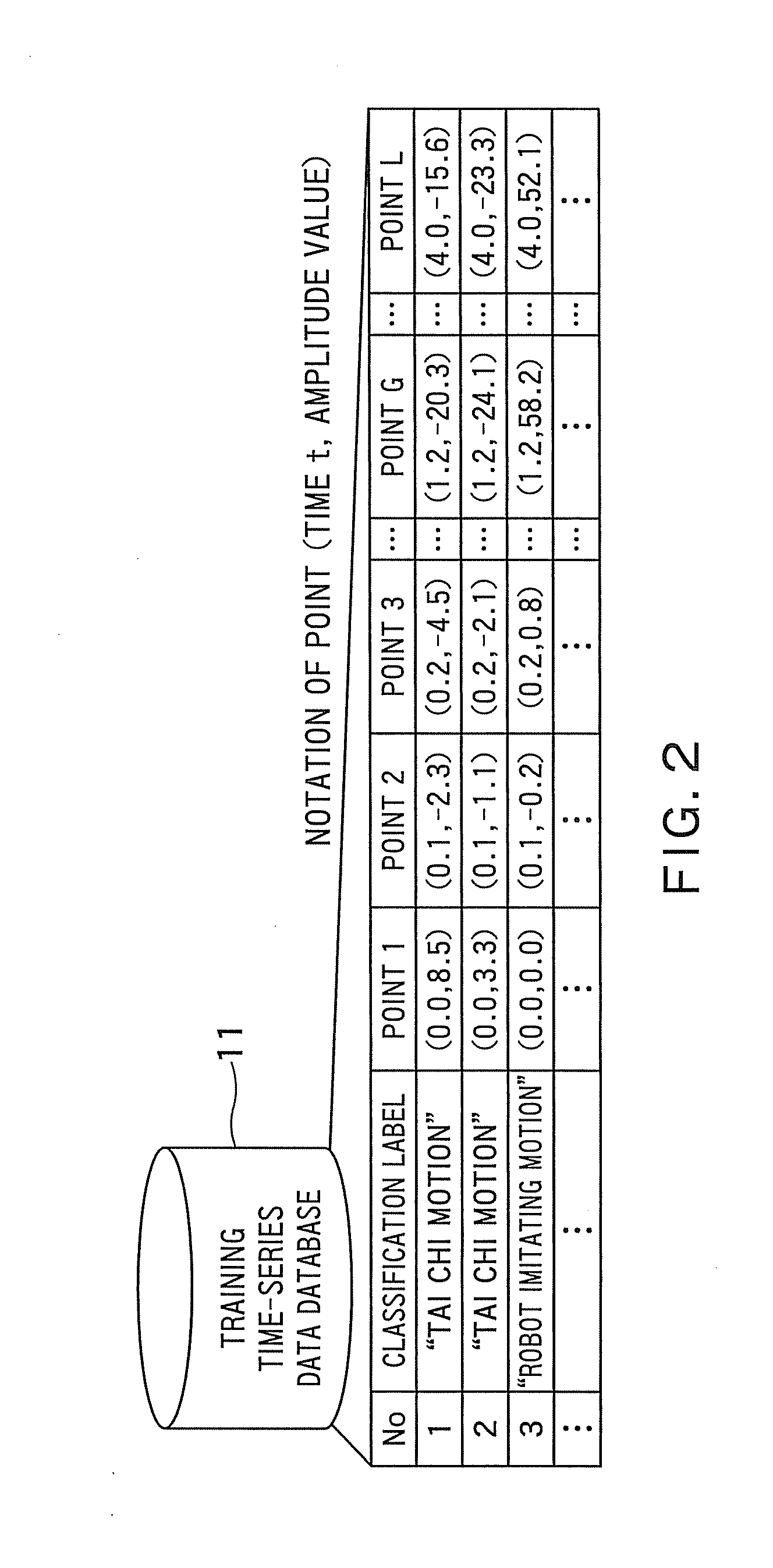Apparatus and method for classifying time-series data and time-series data processing apparatus
a technology of time-series data and data processing apparatus, which is applied in the field of apparatus and method for classifying time-series data for classifying time-series data, can solve the problems of reducing the accuracy of classification
- Summary
- Abstract
- Description
- Claims
- Application Information
AI Technical Summary
Problems solved by technology
Method used
Image
Examples
first embodiment
[0073]FIG. 1 is a block diagram showing a configuration of a time-series data classifying apparatus as a first embodiment of the invention.
[0074]A training time-series data database (a first database) 11 stores a plurality of cases that include time-series data which is chronological recording of observed values resulting from observation of an observation object e.g., by a sensor and a classification label which represents the state or type of the observation object as when time-series data is obtained. Time-series data is obtained by converting an analog signal acquired through a sensor into a digital signal by way of A / D conversion.
[0075]FIG. 2 shows an example of the training time-series data database 11.
[0076]The database 11 has stored therein a plurality of cases including time-series data resulting from simplified motion capture and classification labels that represent a motion or gesture as when time-series data was obtained. The time-series data is recording of observed val...
second embodiment
[0125]While in the first embodiment the peak feature extracting unit 15 detects peak points in waveform segmenting section, still finer peak detection can also be performed. Specifically, when two or more peak points are detected in a waveform segmenting section, the above-described peak detection is further performed in a section defined by two of the detected peak points. This process is performed with a predetermined maximum number of iterations as a limit. This embodiment is described below in detail.
[0126]FIG. 26 shows an example of finer peak detection in the partial time-series waveform shown in FIG. 10 (Example 4).
[0127]Further peak detection is performed in a section that is defined by the near-boundary anterior amplitude absolute value maximum time and the amplitude absolute value maximum time (=the near-boundary posterior amplitude absolute value maximum time). In this example, when the maximum number of iterations is set to two or greater, only one peak point is detected...
third embodiment
[0129]This embodiment is intended to also extract feature points that cannot be detected by the methods of the first and second embodiments. For example, such a point as shown in FIG. 27 (a bend) cannot be extracted by the methods of the first and second embodiments. This embodiment also extracts such a point as a feature point of a waveform (time-series data).
[0130]FIG. 28 illustrates an example of processing by the peak feature extracting unit 15 in this embodiment.
[0131]The peak feature extracting unit 15 connects arbitrary neighboring points with a line segment in a point set including the start and end points of time-series data, intersection points of the time-series data and the reference line, and peak points extracted from respective sections. The peak feature extracting unit 15 then draws a perpendicular from the connecting line segment to the time-series data, and detects as a feature point an intersection point of the perpendicular and the time-series data as when the le...
PUM
 Login to View More
Login to View More Abstract
Description
Claims
Application Information
 Login to View More
Login to View More - R&D
- Intellectual Property
- Life Sciences
- Materials
- Tech Scout
- Unparalleled Data Quality
- Higher Quality Content
- 60% Fewer Hallucinations
Browse by: Latest US Patents, China's latest patents, Technical Efficacy Thesaurus, Application Domain, Technology Topic, Popular Technical Reports.
© 2025 PatSnap. All rights reserved.Legal|Privacy policy|Modern Slavery Act Transparency Statement|Sitemap|About US| Contact US: help@patsnap.com



